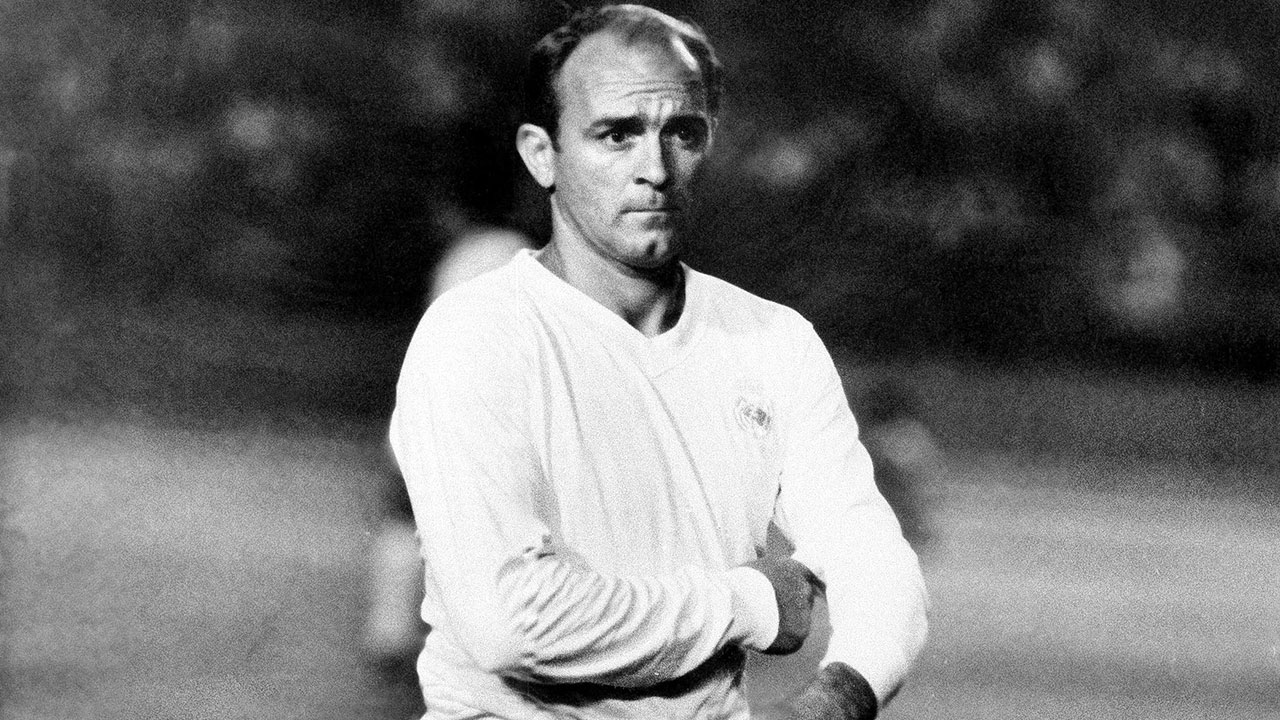For a generation of soccer fans uninterested in the sport’s rich history, Alfredo Di Stefano was that really old guy Real Madrid trotted out whenever they signed a new galactico.
When Zinedine Zidane, David Beckham, Kaka and Cristiano Ronaldo were formally unveiled as Real Madrid players, Di Stefano, who was the club’s honorary president, was standing right next to them for the photo op at their introductory press conferences—the old guard and the new guard, side-by-side.
Di Stefano looked old in those photos—very old. He was either hunched over in his seat or tightly gripping his cane to maintain his balance while standing. It looked like a stiff wind would knock him over. You’d never know to look at him that he was once the best player on the planet.
But the truth was Di Stefano—who died on Monday at the age of 88 after suffering a heart attack—could have played Zidane, Beckham, Kaka and Ronaldo off the park during his prime.
It’s a very sad day. For me, for all the madridistas, for the world of football. #EternoAlfredo pic.twitter.com/VKRbSmO61s
— Cristiano Ronaldo (@Cristiano) July 7, 2014
Nicknamed La Saeta Rubia (The Blond Arrow) for his speed, Di Stefano WAS Real Madrid, helping los blancos win five consecutive European Cups from 1956-60, and eight Spanish league titles. He also won the coveted Ballon d’Or as the European player of the year in 1957 and 1959, before eventually retiring at the age of 40 in 1966.
Di Stefano was a forward by trade, and a damn good one at that. He scored 418 goals in 510 official games for Real Madrid, including a hat trick in the Spanish club’s famous 7-3 win over Eintracht Frankfurt in the 1960 European Cup final, regarded as one of the greatest games ever.
To refer to Di Stefano simply as a forward doesn’t quite do him justice, though. He was more than that, described by many of his contemporaries, including no less an authority than Eusebio, as the most complete player in the sport’s history.
“He attacked, he defended, he passed the ball, he fought hard and did all of that in a career that lasted over 20 years. He had everything,” said former Real teammate Just Fontaine, who still holds the record for most goals in one World Cup when he scored 13 for France in 1958.
Even Pele recognized the Blond Arrow’s standing in the game.
“People talk about the best [player of all-time] being Pele or Diego Maradona, but for me the best player ever was Alfredo Di Stefano,” the Brazilian said in 2009.
No doubt Di Stefano was a genius on the pitch, and his permanent place in soccer’s pantheon among the sport’s all-time greats is beyond question.
But his greatest influence came off the field. Although born in Argentina, Di Stefano was a true citizen of the world—he was of Italian descent, represented three different nations internationally (including Argentina and Colombia) and adopted Spain as his homeland.
It’s more than fitting, then, that Di Stefano embodied the globalization of soccer, the world’s most popular sport.
He gave the European Cup, a fledgling tournament at the time of its conception, instant credibility as Real romped to victory in the first five finals. The Champions League would eventually grow into one of the biggest sports events in the world.
Real Madrid became a global brand in an era without the internet and limited television exposure. Black and white newsreels of Di Stefano’s latest conquests on the pitch at the time were watched all over the world, allowing not only Real Madrid but the sport itself to extend its global reach.
World Soccer, the widely respected and authoritative print publication based in England, was launched in 1960, inspired in large part by Di Stefano’s performance against Eintracht Frankfurt at Glasgow’s Hampden Park. The magazine’s staff of writers and editors wanted to challenge soccer fans in England who new little about the game outside of their country, and expand their knowledge base of the global game. Fifty-four years later, World Soccer is still going strong, covering the sport in all parts of the world, and boasts a massive and diverse readership.
Before Pele, before Maradona, before Johan Cruyff and before all the others there was Di Stefano—soccer’s global ambassador.
How sad, then, that Di Stefano never graced the sport’s biggest stage, the World Cup. He earned a handful of caps for both Argentina and Colombia early in his career. Shortly after joining Real Madrid in 1953, he acquired Spanish citizenship and was allowed to represent Spain. After failing to qualify for the 1958 World Cup in Sweden, Di Stefano helped La Roja qualify for the 1962 tournament. He never made it to Chile, though—an injury ruled him out from playing at the tournament.
No matter. By that point, Di Stefano had done so much for soccer, helping it extend its reach and popularity around the world. This, more than anything else he did on the field, was his greatest accomplishment, his lasting legacy.
John Molinaro is Sportsnet’s chief soccer reporter. Follow him on Twitter

